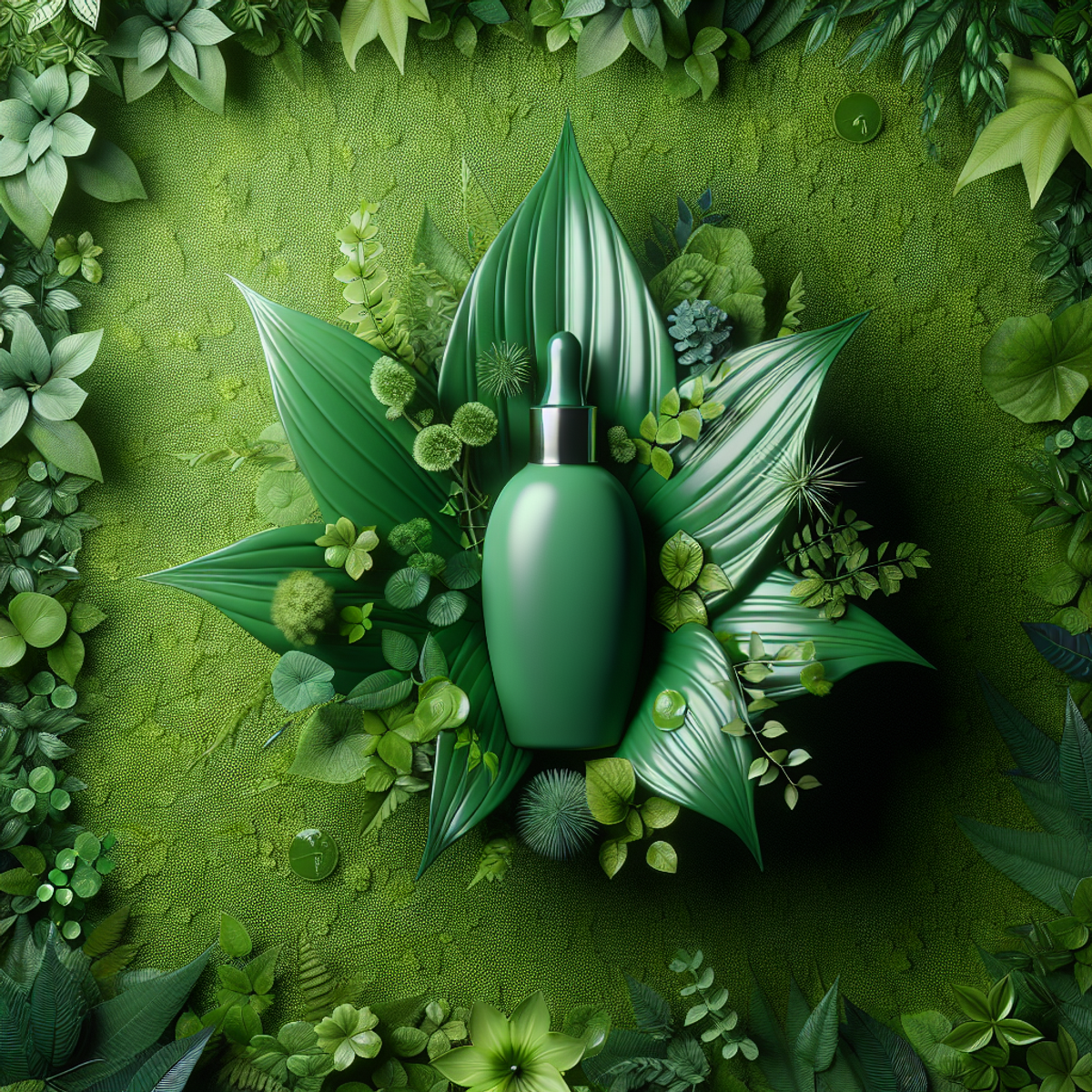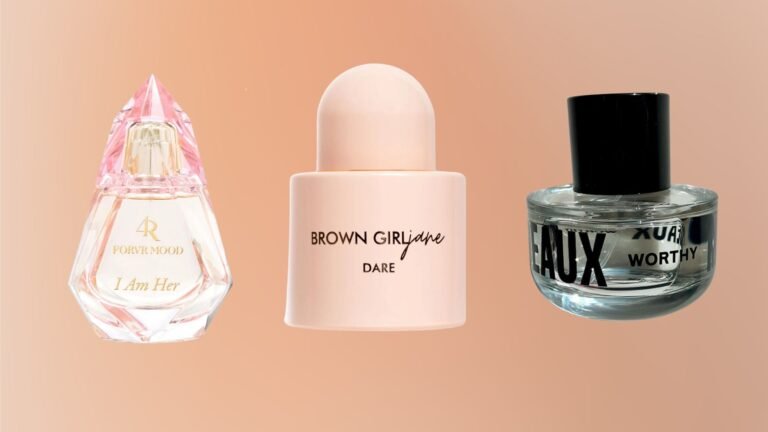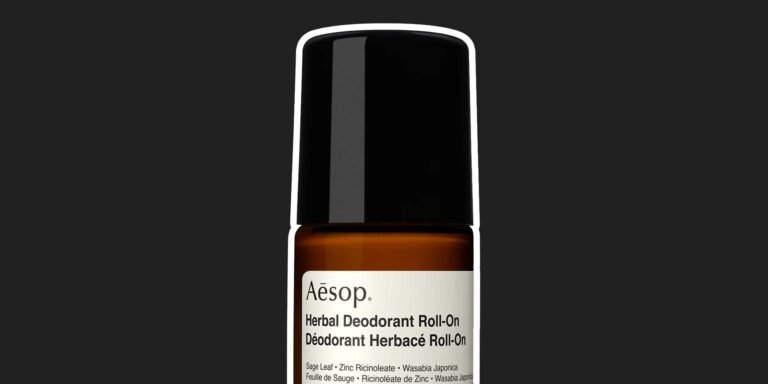Green Cosmetics: The Push for Sustainable Beauty

Introduction
Green cosmetics are changing the beauty industry by offering a sustainable alternative to traditional products. With a growing focus on being environmentally conscious, people are becoming more aware of how their beauty habits impact the Earth. This awareness has created a demand for sustainable beauty products that prioritize personal well-being and the health of our planet.
Recently, green cosmetics have become more popular and have started to challenge the usual beauty standards and practices. These products are made with natural ingredients obtained from renewable sources and do not contain harmful chemicals that are often found in regular cosmetics. By using eco-friendly manufacturing methods and innovative packaging techniques, green cosmetics aim to reduce their negative impact on the environment.
The importance of green cosmetics in the beauty industry cannot be emphasized enough. Consumers now have access to more information and are looking for products that match their values while also contributing to a healthier planet. As a result, brands are feeling the pressure to offer sustainable options that meet this growing demand.
In this article, we will explore the world of green cosmetics, highlighting their advantages, core principles, and how they drive positive change in the beauty industry. Let’s dive into the world of sustainable beauty and see how your beauty routine can make a meaningful impact.
Understanding Green Cosmetics
The push for sustainable beauty in the cosmetics industry places a strong emphasis on environmentally-friendly formulations, production practices, and packaging methods. In this section, we will delve deeper into the principles of green cosmetics and the significant role they play in promoting sustainability.
Definition of Green Cosmetics and Its Key Principles
Green cosmetics, also known as eco-friendly or sustainable cosmetics, refer to beauty products that are manufactured using natural ingredients from renewable raw materials. These products are formulated without the use of petrochemicals and are often free from synthetic dyes and fragrances. The key principles of green cosmetics revolve around promoting environmental responsibility, ethical sourcing of ingredients, and prioritizing the well-being of both consumers and the planet.
Exploration of the Use of Natural Ingredients from Renewable Raw Materials
One of the defining characteristics of green cosmetics is the utilization of natural ingredients derived from renewable raw materials. These ingredients may include plant-based extracts, essential oils, botanicals, and minerals sourced through sustainable agricultural practices. By incorporating these natural elements into their formulations, green cosmetics brands aim to minimize their ecological footprint while harnessing the beneficial properties of these organic resources.
Discussion on the Importance of Adopting Eco-Friendly Production Practices and Packaging Methods in the Industry
In addition to utilizing sustainable ingredients, green cosmetics prioritize eco-friendly production practices and packaging methods. This involves reducing energy consumption during manufacturing processes, implementing waste reduction strategies, and opting for recyclable or biodegradable packaging materials. By adopting these eco-conscious approaches, cosmetic companies can minimize their impact on the environment while aligning with the values of environmentally conscious consumers.
By understanding the fundamental principles underlying green cosmetics and their commitment to sustainability through natural ingredients and eco-friendly practices, we can gain valuable insights into the positive impact of embracing this transformative approach to beauty.
The Benefits of Going Green with Your Beauty Routine
Green cosmetics offer a range of advantages that make them an appealing choice for those looking to adopt a more sustainable beauty routine. By choosing green cosmetics and opting for sustainable skincare/cosmetics brands, you can not only benefit your personal well-being but also contribute to the health of the planet.
Here are some key benefits of going green with your beauty routine:
1. Safer Ingredients
Green cosmetics prioritize the use of natural and organic ingredients sourced from renewable raw materials. These ingredients are often free from harmful chemicals, synthetic fragrances, and artificial colors commonly found in conventional cosmetics. By using products with safer ingredients, you can reduce the risk of skin irritations, allergies, and other adverse reactions.
2. Reduced Environmental Impact
The production and disposal of conventional cosmetics can have a significant environmental impact. Petrochemical-based ingredients and non-recyclable packaging contribute to pollution and waste accumulation. In contrast, green cosmetics focus on eco-friendly production practices and sustainable packaging methods. They use renewable resources and strive for reduced energy consumption, carbon emissions, and water usage throughout the product lifecycle. By choosing green cosmetics, you can minimize your ecological footprint and help protect the environment.
3. Ethical Sourcing Practices
Many sustainable skincare/cosmetics brands are committed to ethical sourcing practices. They prioritize fair trade partnerships with local communities, ensuring that ingredients are obtained responsibly while supporting livelihoods and promoting economic empowerment. These brands often work closely with farmers and producers who use environmentally friendly farming methods, preserving biodiversity and protecting natural habitats.
4. Personal Well-Being
Green cosmetics not only benefit the planet but also offer potential advantages for your skin health. The use of natural ingredients in these products can provide nourishment, hydration, and protection without harsh chemicals that may strip away natural oils or disrupt the skin’s balance. Green cosmetics often contain antioxidants, vitamins, and minerals that promote healthy skin while reducing the risk of long-term damage caused by free radicals and environmental stressors.
5. Cruelty-Free
Many sustainable skincare/cosmetics brands are committed to being cruelty-free, meaning they do not test their products on animals. By choosing green cosmetics, you can support brands that prioritize the well-being and ethical treatment of animals.
6. Brand Transparency
Green cosmetics often prioritize transparency in their ingredient lists, manufacturing processes, and sustainability practices. They strive to educate consumers about their products’ origins, formulation techniques, and eco-friendly initiatives. This transparency allows you to make informed choices aligned with your values and encourages accountability within the industry.
In summary, the benefits of going green with your beauty routine are numerous. By choosing green cosmetics and supporting sustainable skincare/cosmetics brands, you can:
- Enjoy safer ingredients for your skin
- Reduce your environmental impact
- Promote ethical sourcing practices
- Prioritize personal well-being
- Support cruelty-free products
- Benefit from brand transparency
Embracing a greener beauty routine not only enhances your own health but also contributes to the overall well-being of the planet we call home.
Exploring Key Sustainable Ingredients in Green Cosmetics
Green cosmetics are made with sustainable ingredients sourced from renewable materials. These ingredients offer effective skincare benefits and support a more eco-friendly beauty routine. Let’s explore some common sustainable ingredients found in green cosmetics:
1. Palm Oil
- Palm oil comes from the fruit of the oil palm tree, native to Africa. It’s widely used in the cosmetics industry for its versatility.
- Sustainable palm oil is produced using methods that avoid deforestation and prioritize environmental conservation.
- In skincare products, palm oil moisturizes the skin, improves product texture, and enhances stability.
2. Argan Oil
- Argan oil is extracted from the kernels of the argan tree, native to Morocco. It’s popular in green cosmetics for its nourishing and rejuvenating properties.
- The production of argan oil supports local communities in Morocco and promotes sustainable harvesting practices.
- Argan oil contains essential fatty acids, antioxidants, and vitamins that hydrate the skin, reduce inflammation, and protect against free radicals.
3. Avocado Oil
- Avocado oil is obtained from ripe avocados. It’s known for its moisturizing properties and nutrient content.
- The extraction of avocado oil involves using discarded avocado pits or surplus avocados that would otherwise go to waste.
- Avocado oil deeply moisturizes the skin, soothes dryness and irritation, and promotes a healthy complexion.
In addition to these specific ingredients, green cosmetics often include other sustainable components like botanical extracts, natural clays, and plant-based oils. These ingredients are carefully chosen to ensure responsible sourcing and minimal environmental impact.
Using products with these sustainable ingredients offers benefits for both your skin and the environment:
- Safer formulations without harmful chemicals commonly found in regular cosmetics.
- Improved skin health from natural and organic ingredients.
- Lower risk of irritation or allergic reactions with hypoallergenic and non-irritating ingredients.
- Better results through powerful plant-based actives targeting various skincare issues.
By exploring green cosmetics with these sustainable ingredients, you can positively influence your skin and surroundings. Different brands may have their own unique blends of sustainable ingredients, so research and choose products that align with your specific skincare needs and values.
The Role of Natural Cosmetic Emulsifiers and Oleochemicals in Sustainability
Natural cosmetic emulsifiers and oleochemicals play a vital role in meeting the public’s increasing demand for sustainable beauty choices. These ingredients possess eco-friendly properties and functions that align with the principles of green cosmetics, making them essential in the cosmetics industry’s sustainability efforts.
Eco-Friendly Properties of Natural Cosmetic Emulsifiers
- Biodegradability: Natural cosmetic emulsifiers, often derived from renewable resources like plant-based oils or fats, easily break down in the environment without leaving behind harmful residues or causing pollution.
- Low Environmental Impact: Unlike their synthetic counterparts, natural cosmetic emulsifiers have a smaller carbon footprint and require less energy-intensive manufacturing processes. They are often produced using environmentally friendly methods such as cold-pressed extraction or enzymatic reactions.
- Skin Compatibility: Natural cosmetic emulsifiers are gentle on the skin, reducing the likelihood of irritation or allergic reactions. This makes them particularly beneficial for individuals with sensitive skin or those prone to conditions like eczema or rosacea.
Functions of Natural Cosmetic Emulsifiers
- Emulsion Stabilization: Emulsifiers help blend oil-based and water-based ingredients together, creating stable formulations. Natural emulsifiers like beeswax, candelilla wax, and lecithin provide excellent stability while maintaining the product’s integrity.
- Texture Enhancement: Natural cosmetic emulsifiers contribute to the desired texture and consistency of skincare and cosmetic products. They improve spreadability, enhance viscosity, and create luxurious textures that appeal to consumers.
- Active Ingredient Delivery: Emulsifiers facilitate the delivery of active ingredients into the skin, ensuring their effectiveness. Natural alternatives like glyceryl stearate, sorbitan olivate, and cetearyl glucoside offer this functionality while keeping the formulation eco-friendly.
Oleochemicals: A Sustainable Ingredient Option
Oleochemicals, derived from plant-based oils and fats, offer a sustainable alternative to petrochemical-derived ingredients. These versatile compounds find various applications in green cosmetics, including:
- Surfactants: Oleochemical surfactants provide cleansing and foaming properties in skincare and haircare products. They are biodegradable and have lower toxicity compared to conventional surfactants like sodium lauryl sulfate.
- Emollients: Oleochemical-based emollients, such as coconut oil or shea butter, moisturize the skin without leaving a greasy residue. They nourish and soften the skin naturally, promoting a healthier appearance.
- Thickeners: Some oleochemicals, like castor oil or lanolin, can act as thickeners in cosmetic formulations. They enhance the viscosity of products like creams or lotions while providing additional nourishing properties.
By incorporating natural cosmetic emulsifiers and oleochemicals into formulations, brands can create sustainable beauty products that align with consumer preferences for eco-friendly options. These ingredients not only meet the demand for greener alternatives but also offer functional benefits and compatibility with various skin types.
To delve deeper into this topic, you can refer to these research articles: Study on Natural Cosmetic Emulsifiers, Exploring the Role of Oleochemicals in Sustainability,
Addressing Environmental Concerns: A Look at the Dark Side of Conventional Cosmetics
The use of petrochemicals in conventional cosmetics has raised significant environmental and health concerns. These concerns have led many consumers to seek out alternative beauty products that are free from these harmful ingredients. In this section, we will explore the environmental degradation and health risks associated with the use of petrochemicals in cosmetics formulations.
Environmental Degradation
- Air Pollution: The production and use of petrochemicals release volatile organic compounds (VOCs) into the air, contributing to air pollution. VOCs are known to contribute to the formation of smog and can have adverse effects on air quality.
- Water Pollution: Petrochemicals used in cosmetics can end up in water sources through various pathways such as manufacturing waste, product disposal, and personal use. These chemicals can contaminate water bodies, posing a threat to aquatic life.
- Land Degradation: The extraction and processing of petrochemicals can lead to land degradation, including habitat destruction and soil contamination.
Health Risks
- Skin Irritation: Petrochemical ingredients like parabens, phthalates, and synthetic fragrances have been linked to skin irritation and allergic reactions.
- Endocrine Disruption: Some petrochemicals used in cosmetics have been found to mimic hormones in the body, leading to endocrine disruption. This disruption can interfere with normal hormonal function and potentially contribute to reproductive issues and hormonal imbalances.
- Toxicity: Certain petrochemical ingredients have been identified as potential toxins or carcinogens, raising concerns about their long-term effects on human health.
Given these environmental and health concerns, it is no wonder that consumers are increasingly seeking out green cosmetics that avoid the use of petrochemicals. By choosing sustainable beauty products, consumers can reduce their exposure to harmful chemicals and contribute to a cleaner and healthier environment.
“The use of petrochemicals in cosmetics has raised significant environmental and health concerns, including air and water pollution, land degradation, skin irritation, endocrine disruption, and potential toxicity. By opting for green cosmetics that avoid the use of petrochemicals, consumers can make a positive impact on both their own well-being and the health of the planet.”
The Power of Consumer Demand: Driving Force Behind the Shift to Natural Products
Consumer demand for natural products has played a significant role in driving the cosmetics industry towards embracing sustainability. As more and more people become aware of the potential harm that conventional cosmetics can cause to both their health and the environment, they are actively seeking out greener options that align with their values. This shift in consumer preferences has created a powerful force for change within the industry.
Exploring Increasing Consumer Demand
The increasing consumer demand for natural products has been fueled by several factors:
- Health Consciousness: Consumers are becoming increasingly conscious of the potential health risks associated with the use of synthetic chemicals in cosmetics. They are concerned about the long-term effects these chemicals may have on their skin, as well as the potential for allergic reactions and other adverse effects.
- Environmental Awareness: With growing awareness of environmental issues, consumers are now seeking out products that have a reduced impact on the planet. They are looking for brands that prioritize sustainable sourcing, eco-friendly production practices, and recyclable or biodegradable packaging.
- Transparency and Ingredient Awareness: Consumers are demanding greater transparency from cosmetic brands regarding their ingredients and manufacturing processes. They want to know exactly what they are putting on their skin and how it is being produced. This increased focus on ingredient awareness has led to a rise in demand for products made from natural and organic ingredients.
Empowering Consumers to Make a Difference
Consumers have realized that they have the power to make a difference through their purchasing choices. By supporting brands that prioritize sustainability and natural ingredients, they can drive further change within the industry. Here’s how consumers can make an impact:
- Choose Green Brands: By consciously choosing green cosmetic brands, consumers can send a clear message to the industry that there is a demand for sustainable beauty products. Supporting these brands encourages others to follow suit, leading to a broader shift towards more eco-friendly practices.
- Educate Others: Consumers can spread awareness and educate others about the benefits of green cosmetics. By sharing their knowledge and personal experiences, they can inspire others to make conscious choices in their beauty routines.
- Demand Transparency: Consumers should continue to demand transparency from cosmetic brands, encouraging them to disclose their ingredient lists, sourcing methods, and production practices. This demand for transparency pushes brands to be more accountable and adopt more sustainable practices.
- Support Green Initiatives: Consumers can actively support green initiatives within the cosmetics industry. This includes participating in recycling programs, supporting brands that prioritize sustainable packaging innovations, and advocating for stricter regulations on the use of harmful chemicals in cosmetics.
The Impact of Consumer Demand
The growing consumer demand for natural products has already had a significant impact on the cosmetics industry. Brands that were once focused solely on conventional products are now expanding their offerings to include greener alternatives. As a result, we are seeing a rise in the availability of natural skincare and cosmetic products that are free from harmful chemicals.
Moreover, this shift towards sustainability has led to increased investment in research and development of new eco-friendly ingredients and production methods. Cosmetic companies are now exploring innovative ways to create effective products without compromising on environmental responsibility.
By harnessing the power of consumer demand, individuals have the ability to shape the future of the cosmetics industry. Each purchasing decision contributes to driving change towards a more sustainable and environmentally friendly beauty landscape.
The Growing Demand for Environmentally Friendly Beauty Products
The market for green cosmetics has been booming lately. This is because more and more consumers are looking for beauty products that are both sustainable and eco-friendly. As a result, the cosmetics industry has undergone a major transformation, with brands that prioritize sustainability now having a chance to shine.
Impressive Market Growth
The green cosmetics market has been growing steadily, with both consumer awareness and sales on the rise. According to a report by Grand View Research, the global market for organic and natural cosmetics is expected to reach $54.5 billion by 2027. This shows just how popular green cosmetics have become among consumers worldwide.
Reasons Behind the Market’s Success
There are several factors driving the success of the green cosmetics market:
- Increased Awareness of Environmental Issues: Consumers are now more aware of how their purchasing decisions can impact the environment. Because of this, they actively seek out sustainable alternatives in an effort to reduce their carbon footprint and support brands that share their values.
- Concerns About Health and Safety: Many people worry about the potential health risks associated with conventional cosmetic ingredients like parabens, phthalates, and synthetic fragrances. Green cosmetics provide a safer option as they’re made with natural and organic ingredients that are less likely to cause skin irritation or adverse reactions.
- Desire for Transparency and Ethical Sourcing: Green cosmetic brands often prioritize transparency when it comes to where they source their ingredients from. They use ethically sourced materials which appeals to consumers who value transparency and want to support brands that prioritize fair trade and sustainable sourcing methods.
- Influence of Social Media: The rise of social media platforms has had a big impact on consumer preferences and the growth of the green cosmetics market. Beauty influencers and eco-conscious bloggers regularly share their experiences with sustainable beauty products, creating awareness and influencing purchasing decisions.
How the Industry is Responding
Both established brands and newcomers in the beauty industry are taking notice of the demand for green cosmetics and making changes accordingly. Many well-known cosmetic companies have introduced eco-friendly product lines or reformulated their existing products to meet consumer expectations.
At the same time, smaller brands that specialize in natural and organic cosmetics have also gained popularity. They offer consumers a wide range of green options to choose from, often with sustainable packaging, renewable raw materials, and eco-friendly production practices.
Green Cosmetics Around the World
While the market for green cosmetics is growing globally, there are certain regions where its popularity is especially high:
- Europe: Countries like Germany and France have been leading the way in the green cosmetics movement. The European Union has implemented strict regulations on cosmetics, pushing for the use of natural and organic ingredients.
- North America: Demand for green cosmetics is also rising quickly in North America. Consumers in the United States and Canada are increasingly interested in sustainable beauty products, which is driving market growth in the region.
- Asia-Pacific: The Asia-Pacific region is becoming an important market for green cosmetics. Countries such as Japan, South Korea, and Australia have a strong focus on natural beauty and skincare products, contributing to overall market growth.
With all these factors at play, it’s clear that the market for green cosmetics will continue to expand in the future. As more people prioritize sustainability and look for ways to make greener choices in their everyday lives, the demand for environmentally friendly beauty products will only increase. This presents a great opportunity for brands to innovate and develop new formulations and packaging methods that are both effective and eco-friendly.
Embracing a Greener Future: The Way Forward for Sustainable Beauty
The push for sustainable beauty in the cosmetics industry is not just a passing trend; it is a necessary step towards a more eco-friendly and responsible future. Both brands and consumers have a crucial role to play in creating a greener beauty industry. Here are some key points to consider:
1. Continued efforts towards sustainability
It is essential for brands to prioritize sustainability in all aspects of cosmetic production. This includes using renewable and natural ingredients, adopting eco-friendly production practices, and implementing sustainable packaging methods. By making these changes, brands can significantly reduce their environmental impact and contribute to a greener future.
2. Supporting green initiatives
As consumers, we have the power to drive change through our purchasing choices. By supporting brands that prioritize sustainability and actively seek out green initiatives, we can encourage more companies to adopt eco-friendly practices. Additionally, we can participate in recycling programs and choose products with sustainable packaging, such as those made from recycled materials or biodegradable alternatives.
3. Advocating for transparency
Transparency is crucial in the beauty industry. Consumers should demand clear and honest labeling of products, ensuring that any claims of being “green” or “natural” are backed by evidence. By advocating for transparency, we can ensure that brands are held accountable for their sustainability efforts and avoid greenwashing.
4. Educating ourselves
Understanding the impact of our beauty routines is essential for making informed choices. Take the time to research and educate yourself about the ingredients used in your favorite products and their environmental implications. Look for certifications such as organic or cruelty-free labels that indicate a brand’s commitment to sustainability.
By embracing these principles, we can collectively work towards a greener future in the beauty industry. The shift towards sustainable beauty requires both brands and consumers to take responsibility for their actions. Together, we can create a more environmentally conscious and socially responsible cosmetics industry.
“The future of beauty is in our hands. Let’s choose sustainable beauty for a healthier planet.”
Conclusion
The shift towards green cosmetics is not just a trend, but a significant step towards a healthier lifestyle and a sustainable future for our planet. By opting for sustainable beauty products, you are not only taking care of your skin but also contributing to the reduction of environmental impact.
As you conclude your reading, I urge you to take action in embracing green cosmetics for a brighter and greener future. Your choices matter, and by supporting eco-friendly brands and making sustainable decisions in your beauty routine, you are actively participating in the movement towards sustainable beauty. Let’s join hands in making a positive impact on our personal well-being and the health of our planet.










